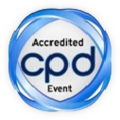
Biography
Biography: Hari Shanker Sharma
Abstract
The pathophysiology of Alzheimer’s Disease (AD) and its modulating factors are still not well known. Recent evidences suggest that our military personnel are at high risk for developing AD following traumatic brain injury (TBI) and/or post-traumatic stress disorders (PTSD). Thus, further studies are needed in this area to unravel biological mechanisms of AD in order to explore suitable therapeutic strategies in clinics.rnNanoformulation enhances neurotherapeutic values of drugs or neurodiagnostic tools as compared to their parent compounds. Thus, role of nanomedicine is to enhance the drug availability within the central nervous system (CNS) for greater therapeutic successes. However, once the drug-nanoparticle complexes enter into the CNS, the fate of nanomaterial is largely unknown. There are evidences to suggest that neuroprotective agents if given either in double doses or administered through nontechnology, e.g., TiO2 nanowired delivery achieved better neuroprotection than the parent compound given alone. In our hands, cerebrolysin, a multimodal drug has superior neuroprotective effects in CNS trauma, hyperthermia and in pathogenesis of AD. These observations clearly indicate that nanomedicine is the need of the hour to induce clinical benefits in situations of AD and other neurodegenerative diseases. rnRecently, role of mesenchymal stem cells (MSCs) in reducing AD pathology is suggested. Thus, it would be interesting to investigate whether nanodelivery of MSCs alone or together with cerebrolysin could have an additive/synergistic effects in inducing neuroprotection in AD. We investigated the role of nanomedicine in Aï¢P induced brain pathology in AD. Furthermore co-administration of TiO2-nanowired MSCs and/or cerebrolysin in reducing AD pathology was also examined. A combination of nanowired MSCs and cerebrolysin potentiated neuroprotection in AD. The functional significance of tehse findings in relation to future clinical strategies in AD therapy will be discussed.rn

